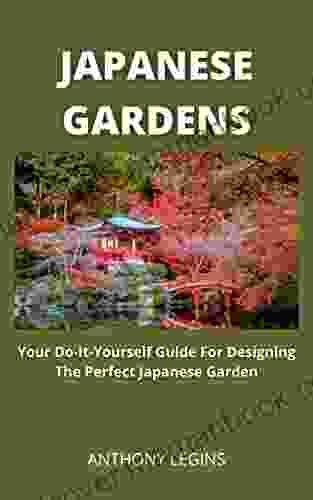Your Do-It-Yourself Guide For Designing The Perfect Japanese Garden

Japanese gardens are renowned for their beauty and tranquility, and they can be a wonderful addition to any home. They are typically characterized by their use of natural materials, such as rocks, water, and plants, and their simple, yet elegant design.
If you are interested in creating your own Japanese garden, there are a few things you will need to consider. First, you will need to choose the right location. Japanese gardens are typically located in a quiet and secluded spot, where they can be enjoyed in peace. You will also need to choose the right plants and materials. Japanese gardens typically use a variety of plants, including trees, shrubs, and flowers. The materials used in Japanese gardens are also typically natural, such as rocks, water, and wood.
Once you have chosen the right location and materials, you can begin to design your Japanese garden. The first step is to create a layout. Japanese gardens are typically laid out in a symmetrical manner, with a central path leading to a focal point. The focal point can be anything from a rock formation to a water feature.
4.5 out of 5
| Language | : | English |
| File size | : | 293 KB |
| Text-to-Speech | : | Enabled |
| Screen Reader | : | Supported |
| Enhanced typesetting | : | Enabled |
| Print length | : | 19 pages |
| Lending | : | Enabled |
Once you have created a layout, you can begin to plant your garden. When choosing plants for your Japanese garden, it is important to consider the overall design of the garden. You will want to choose plants that complement the other elements of the garden, and that create a sense of harmony and balance.
After you have planted your garden, you can begin to add the finishing touches. These finishing touches can include things like rocks, water features, and lanterns. Rocks are often used in Japanese gardens to create a sense of stability and permanence. Water features, such as ponds and waterfalls, can add a sense of tranquility to the garden. Lanterns can be used to create a sense of atmosphere in the garden, and to illuminate the path at night.
With a little planning and effort, you can create a beautiful and tranquil Japanese garden that you will love for years to come.
The first step in designing a Japanese garden is to choose the right location. Japanese gardens are typically located in a quiet and secluded spot, where they can be enjoyed in peace. The location should also be well-drained and have access to sunlight.
The next step is to choose the right plants and materials for your garden. Japanese gardens typically use a variety of plants, including trees, shrubs, and flowers. The plants should be chosen to complement the other elements of the garden, and to create a sense of harmony and balance.
The materials used in Japanese gardens are also typically natural, such as rocks, water, and wood. Rocks are often used to create a sense of stability and permanence. Water features, such as ponds and waterfalls, can add a sense of tranquility to the garden. Lanterns can be used to create a sense of atmosphere in the garden, and to illuminate the path at night.
The next step is to create a layout for your garden. Japanese gardens are typically laid out in a symmetrical manner, with a central path leading to a focal point. The focal point can be anything from a rock formation to a water feature.
When creating your layout, it is important to consider the size and shape of your garden. You will also want to consider the flow of traffic through the garden. The path should be wide enough to allow people to walk through the garden comfortably, and it should be free of obstacles.
Once you have created a layout, you can begin to plant your garden. When choosing plants for your Japanese garden, it is important to consider the overall design of the garden. You will want to choose plants that complement the other elements of the garden, and that create a sense of harmony and balance.
Japanese gardens typically use a variety of plants, including trees, shrubs, and flowers. Some of the most popular plants used in Japanese gardens include:
- Trees: Japanese maple, pine, cherry blossom, and bamboo
- Shrubs: Azalea, camellia, and rhododendron
- Flowers: Peony, iris, and chrysanthemum
Once you have planted your garden, you can begin to add the finishing touches. These finishing touches can include things like rocks, water features, and lanterns.
Rocks are often used in Japanese gardens to create a sense of stability and permanence. They can be used to create a variety of features, such as stepping stones, dry waterfalls, and rock gardens.
Water features, such as ponds and waterfalls, can add a sense of tranquility to the garden. They can also be used to attract wildlife, such as birds and frogs.
Lanterns can be used to create a sense of atmosphere in the garden, and to illuminate the path at night. They can be placed in a variety of locations, such as on the edge of a pond, or along the path.
With a little planning and effort, you can create a beautiful and tranquil Japanese garden that you will love for years to come. Japanese gardens are a wonderful way to connect with nature and to find peace and tranquility in your own backyard.
4.5 out of 5
| Language | : | English |
| File size | : | 293 KB |
| Text-to-Speech | : | Enabled |
| Screen Reader | : | Supported |
| Enhanced typesetting | : | Enabled |
| Print length | : | 19 pages |
| Lending | : | Enabled |
Do you want to contribute by writing guest posts on this blog?
Please contact us and send us a resume of previous articles that you have written.
 Top Book
Top Book Novel
Novel Fiction
Fiction Nonfiction
Nonfiction Literature
Literature Paperback
Paperback Hardcover
Hardcover E-book
E-book Audiobook
Audiobook Bestseller
Bestseller Classic
Classic Mystery
Mystery Thriller
Thriller Romance
Romance Fantasy
Fantasy Science Fiction
Science Fiction Biography
Biography Memoir
Memoir Autobiography
Autobiography Poetry
Poetry Drama
Drama Historical Fiction
Historical Fiction Self-help
Self-help Young Adult
Young Adult Childrens Books
Childrens Books Graphic Novel
Graphic Novel Anthology
Anthology Series
Series Encyclopedia
Encyclopedia Reference
Reference Guidebook
Guidebook Textbook
Textbook Workbook
Workbook Journal
Journal Diary
Diary Manuscript
Manuscript Folio
Folio Pulp Fiction
Pulp Fiction Short Stories
Short Stories Fairy Tales
Fairy Tales Fables
Fables Mythology
Mythology Philosophy
Philosophy Religion
Religion Spirituality
Spirituality Essays
Essays Critique
Critique Commentary
Commentary Glossary
Glossary Bibliography
Bibliography Index
Index Table of Contents
Table of Contents Preface
Preface Introduction
Introduction Foreword
Foreword Afterword
Afterword Appendices
Appendices Annotations
Annotations Footnotes
Footnotes Epilogue
Epilogue Prologue
Prologue James Byrne
James Byrne Tom Moule
Tom Moule Drew Karpyshyn
Drew Karpyshyn Annette Leibing
Annette Leibing Jennifer Chiaverini
Jennifer Chiaverini Ethan Kind
Ethan Kind Geraldine Powell
Geraldine Powell C Scott Anderson
C Scott Anderson Dakota Grady
Dakota Grady James A Robinson
James A Robinson Michael R G Spiller
Michael R G Spiller Ben Tallon
Ben Tallon Carlotta Gall
Carlotta Gall Robert Burns
Robert Burns Vince Flynn
Vince Flynn Sierra Demulder
Sierra Demulder Julie Rains
Julie Rains W J Herbert
W J Herbert Yolanda Washington Cowan
Yolanda Washington Cowan Harold Evensky
Harold Evensky
Light bulbAdvertise smarter! Our strategic ad space ensures maximum exposure. Reserve your spot today!

 Harry HayesEmpowering Young Minds: A Comprehensive Guide to Helping Children Understand...
Harry HayesEmpowering Young Minds: A Comprehensive Guide to Helping Children Understand...
 Ismael HayesThe Bustan of Sadi: A Literary Masterpiece Translated from the Persian with...
Ismael HayesThe Bustan of Sadi: A Literary Masterpiece Translated from the Persian with... Desmond FosterFollow ·12.8k
Desmond FosterFollow ·12.8k Thomas HardyFollow ·17.4k
Thomas HardyFollow ·17.4k Dakota PowellFollow ·14k
Dakota PowellFollow ·14k Guy PowellFollow ·18.9k
Guy PowellFollow ·18.9k Calvin FisherFollow ·12.9k
Calvin FisherFollow ·12.9k Trevor BellFollow ·11.9k
Trevor BellFollow ·11.9k Henry David ThoreauFollow ·13.1k
Henry David ThoreauFollow ·13.1k Eddie BellFollow ·13.6k
Eddie BellFollow ·13.6k

 Eugene Powell
Eugene PowellComplete Guide to Using Yoga With Kids: Benefits, Tips,...
Yoga is an ancient practice that has been...

 Benji Powell
Benji PowellHow to Make $000 Per Week on Craigslist
Are you looking for a way to make extra money...

 Gabriel Garcia Marquez
Gabriel Garcia MarquezGrocery Row Gardening: The Exciting New Permaculture...
Kick-start your gardening journey with the...

 Hayden Mitchell
Hayden MitchellUnveiling the Gripping World of Winterwood: Ben Hood...
In the annals of crime thrillers, the...

 E.M. Forster
E.M. ForsterThe Financial Advisor Guide To Managing and Investing...
As a financial...

 Lee Simmons
Lee SimmonsIn My Shoes Memoir: A Poignant Journey of Resilience,...
In the tapestry of life, adversity often...
4.5 out of 5
| Language | : | English |
| File size | : | 293 KB |
| Text-to-Speech | : | Enabled |
| Screen Reader | : | Supported |
| Enhanced typesetting | : | Enabled |
| Print length | : | 19 pages |
| Lending | : | Enabled |








